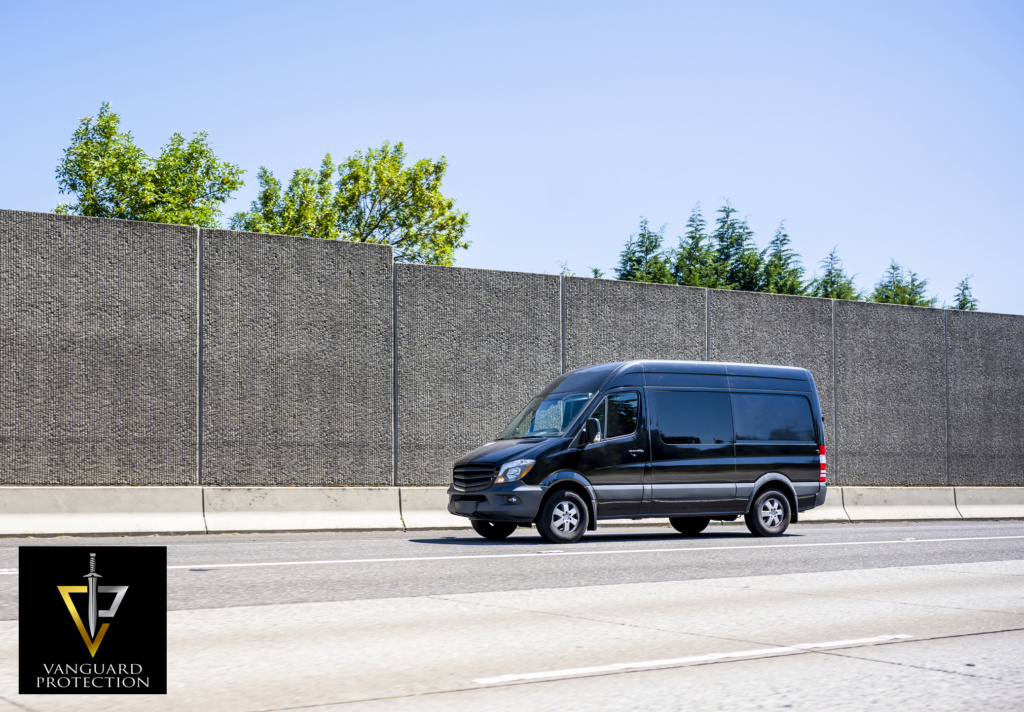
The Protector’s Perspective Issue #8: The Transportation Industry & Emergence of Secured Transport
In recent years, the field of secured ground transportation has experienced a profound transformation. What was once a niche sector dominated by a few longstanding armored vehicle companies has evolved into a complex, multi-dimensional industry that now plays a vital role in the security infrastructure of various high-risk and high-value sectors. Businesses across the economic spectrum ranging from state-legal cannabis dispensaries and pharmaceutical manufacturers to high-end jewelers and corporate finance firms—now rely on secure transport not only as a logistical solution but as a critical component of their broader risk management strategy. This transformation is due in large part to increased security threats, evolving regulatory landscapes, and the necessity for tailored, flexible responses to diverse client needs. Highly specialized security firms have emerged in this evolving environment, offering highly technical and intelligence-integrated services designed to mitigate risks in transit and elevate the standard of secure mobility.
A Decade of Growth, Complexity, and Risk Redefinition
Between 2014 and 2024, the U.S. secured transportation industry underwent rapid expansion, both in terms of service offerings and client demand. While the traditional model of armored car pickups for retail cash deposits and bank transfers remains foundational, the industry’s scope has broadened further to encompass high-value items such as luxury watches, laboratory-grade pharmaceuticals, designer fashion, intellectual property, and personal data. This paradigm shift was driven by a variety of influential factors:
- The Rise of the Legal Cannabis Market: Legalization efforts across more than two dozen states created a booming new industry that remains largely cash-based due to ongoing federal banking restrictions. The result was an urgent need for reliable, licensed, and secure transport services that could navigate a patchwork of regulations while ensuring the safety of cash, cannabis products, and operational staff. Companies like HARDCAR and Blue Line Protection Group tailored their services to this emerging market, building transport systems that combined compliance support, real-time tracking, and highly trained armed couriers.
- Transport of High-Value Assets: The demand for secure transit of high-value goods intensified following incidents like the 2022 Brinks jewelry heist, in which millions of dollars in merchandise were stolen during transit. These incidents exposed vulnerabilities in traditional armored transport systems and led to an increased demand for boutique firms that specialize in covert vehicle operations, enhanced routing security, and continuous monitoring capabilities.
- Heightened Physical Security Threats: Escalating risks from organized theft rings, political unrest, and opportunistic crime contributed to a greater demand for integrated security protocols during asset transit. Companies began seeking service providers that could deliver not just transportation, but real-time intelligence, layered deterrence, and tactical responsiveness in the event of an incident.
Expanding the Role of Secure Transportation: From Simple Courier to Strategic Security Partner
The expectations placed on secure transport providers have shifted dramatically. While the previous generation of armored transport was defined by adherence to schedule and physical defense of cargo, the modern standard involves a deeper alignment with client security goals and operational continuity.
Composed of professionals with military, law enforcement, and private sector security expertise, Vanguard Protection deploys resources in a manner similar to our elite executive protection teams. Our operational structure includes:
- Dynamic Route Planning with Integrated Threat Forecasting: Real-time intelligence is used to evaluate threat variables such as local crime patterns, protest activity, traffic disruptions, and environmental hazards, allowing transport routes to be modified on short notice for optimal safety.
- Personnel with Specialized Training and Experience: Protection staff undergo continuous training in threat recognition, surveillance detection, emergency medical response, and the use of defensive tactics to protect both assets and personnel.
- Deployment of Custom Armored Vehicles: Vanguard utilizes a fleet of purpose-built vehicles outfitted with ballistic protection, redundant communication systems, live telemetry, and onboard surveillance—all designed to withstand targeted attacks and support operational command during transit.
- Flexible Engagement Models: Whether transporting sensitive documentation for a corporate legal team, moving high-volume cash deposits for a dispensary, or relocating proprietary materials for a biotech firm, Vanguard adapts each assignment to meet the specific threat profile, compliance requirements, and strategic priorities of its client.
Lessons Learned from High-Profile Incidents
The past decade has been marked by several incidents that underscore the importance of advanced transport security. Each has served as a real-world validation of the new security paradigm:
- The Miami Armored Truck Robbery (2020): In a meticulously planned attack, armed robbers ambushed a private armored truck in broad daylight in Miami, Florida. The crew was overwhelmed, and the suspects made off with approximately $5 million in cash and valuables. The robbers had prior knowledge of the truck’s route and exploited a brief unscheduled stop. Investigators later revealed that the attackers used signal jammers to disable GPS tracking and executed the theft in under four minutes. This incident highlighted significant vulnerabilities in both planning and technology. It accelerated calls within the industry for improved situational awareness training, hardened tracking systems, and tighter route discipline—reinforcing that even brief deviations from protocol can result in major losses.
- Brinks Armored Truck Heist (2022): A robbery involving an estimated $9 million in stolen jewelry from a Brinks transport vehicle highlighted critical lapses in protocol, vehicle security, and crew readiness. The incident sparked widespread industry conversation and renewed interest in proactive, intelligence-led transport practices that prioritize both discretion and deterrence.
Regulation, Standardization, and Professionalization
The integration of secure transport into industries such as cannabis, pharmaceuticals, and luxury retail has accelerated the need for more rigorous oversight and professionalism. Today’s transport providers are increasingly subject to state and federal regulations that mandate licensing, documentation, real-time vehicle tracking, and employee vetting.
In particular, the cannabis industry has become a regulatory testing ground. Most legal states now require cannabis transporters to hold specialized licenses, use tamper-evident containers, maintain METRC integration, and ensure full chain-of-custody reporting. As clients demand faster reconciliations, auditable transaction logs, and demonstrable risk mitigation, only providers capable of delivering at this elevated level remain competitive.
Looking Forward: Technology, Threat Modeling, and Mission Integration
The future of secured transportation lies in leveraging emerging technologies and integrated threat intelligence to stay ahead of increasingly sophisticated adversaries. Innovations on the horizon include AI-driven risk forecasting, encrypted end-to-end logistics platforms, biometric crew authentication, and autonomous escort systems. These tools will not only enhance security but also streamline operational efficiency and scalability.
For companies like Vanguard Protection, these advances have allowed for strategic expansion. As businesses grow more reliant on mobility and security convergence, firms capable of providing holistic solutions—including transportation, protective intelligence, compliance support, and emergency response—will become indispensable partners in organizational resilience.
In conclusion, secure transport today is not just a matter of safeguarding physical goods. It is a dynamic, intelligence-informed practice that requires foresight, coordination, and precision. It is about building trust, maintaining continuity, and delivering security in motion.

